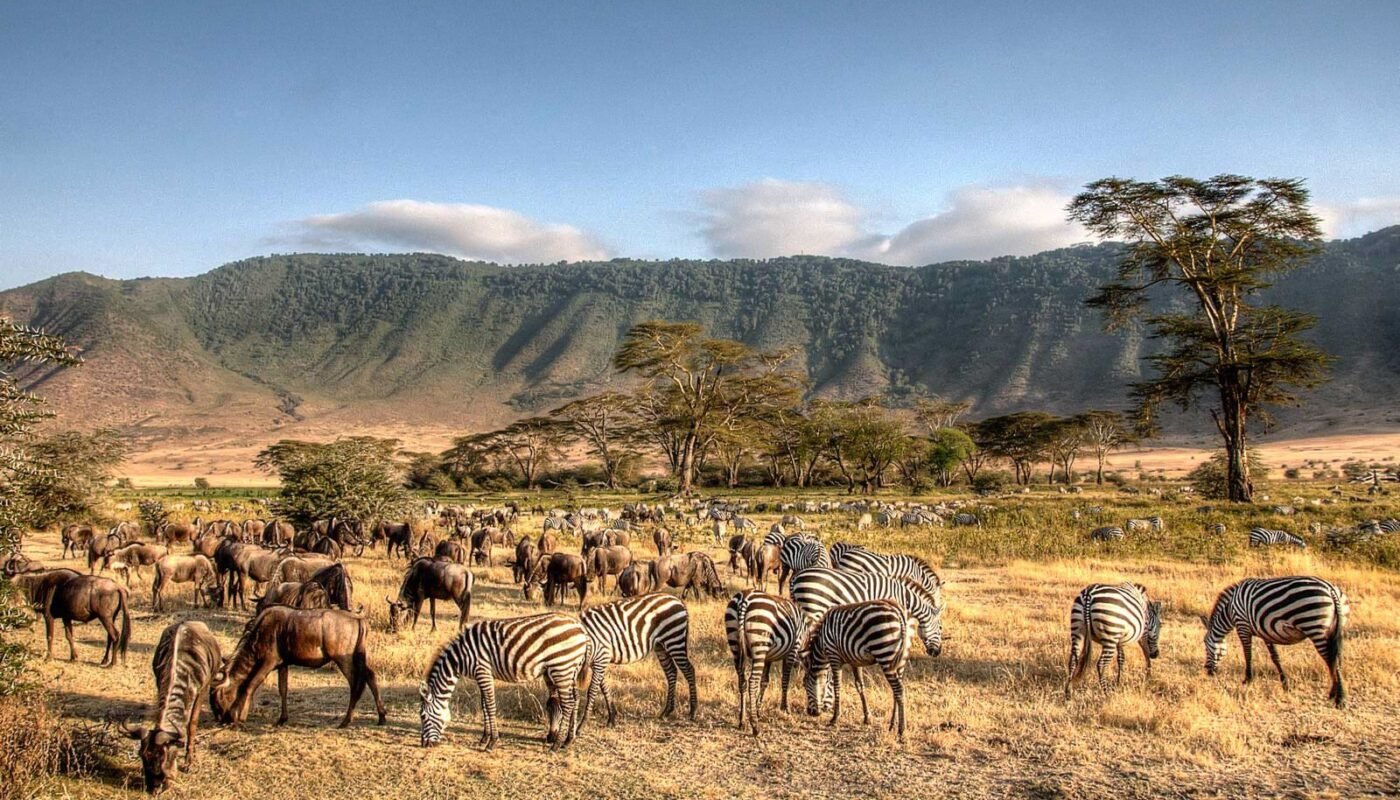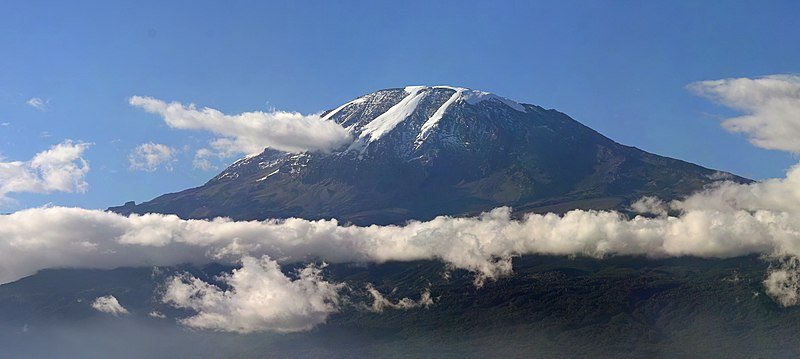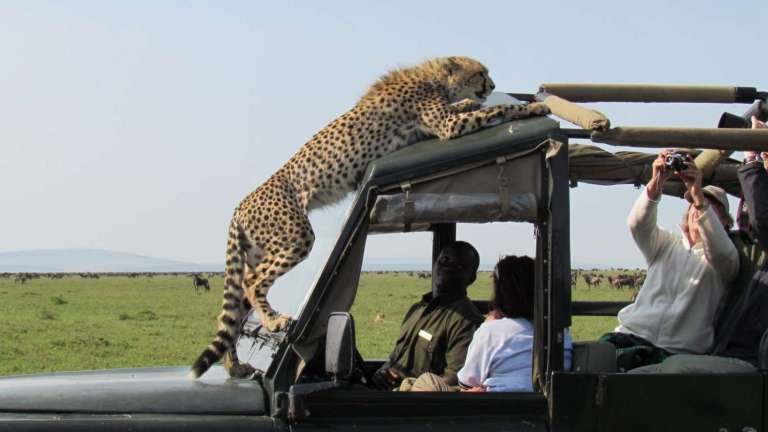Tanzania is a top destination in Africa, known for its breathtaking landscapes, rich culture, abundant wildlife, and some of the most iconic safari experiences on the continent. From the vast plains of the Serengeti, home to the Great Migration, to the towering heights of Mount Kilimanjaro and the white-sand beaches of Zanzibar, Tanzania offers a variety of experiences that cater to every type of traveler. Trips to Tanzania: In this guide, we’ll cover everything you need to know to plan an unforgettable trip to Tanzania, including when to go, where to visit, and travel tips to make the most of your adventure.
Why Tanzania is a Must-Visit Destination
Tanzania is a country of contrasts, from its bustling urban centers to its untouched wilderness. Here are a few key reasons why travelers from around the globe are drawn to this East African gem:
- Iconic Wildlife Safaris: Tanzania is home to some of the most famous national parks in the world, including the Serengeti, Ngorongoro Crater, and Tarangire. The chance to witness the “Big Five” (lion, leopard, elephant, rhino, and buffalo) in their natural habitat is one of the main draws for visitors.
- Mount Kilimanjaro: Africa’s highest peak offers an epic adventure for trekkers and climbers. Standing at 5,895 meters, Kilimanjaro is a bucket-list destination for adventurers seeking to summit the “Roof of Africa.”
- Beaches and Islands: Tanzania’s coastal areas and islands, especially Zanzibar, are known for their crystal-clear waters, rich marine life, and pristine beaches, making them perfect for a relaxing getaway after a safari or hike.
- Cultural Diversity: Tanzania has over 120 ethnic groups, offering a rich cultural experience. From the Maasai people in the north to the Swahili coast, visitors can immerse themselves in local customs, traditional dance, and culinary delights.
- The Great Migration: The annual migration of over 1.5 million wildebeests and hundreds of thousands of zebras across the Serengeti plains is one of the most spectacular wildlife events in the world.
Best Time to Visit Tanzania
The best time to visit Tanzania depends on what you’re looking to experience. Whether you’re interested in safaris, climbing Kilimanjaro, or beach holidays, different times of the year offer varying conditions.
Peak Season (June to October)
- Ideal for Wildlife Safaris: This is Tanzania’s dry season and the best time for wildlife viewing. During these months, animals gather around water sources, making it easier to spot them. The weather is cooler, and the chances of rain are low.
- Great Migration: The peak of the Great Migration, particularly the dramatic river crossings in the northern Serengeti, occurs between July and September.
- Climbing Kilimanjaro: The clear skies and dry weather during these months make it one of the best times to attempt a Kilimanjaro trek.
- Popular but Crowded: As the peak tourist season, expect more crowds and higher prices during this time, especially in popular safari destinations and on Kilimanjaro routes.
Shoulder Season (November and March to May)
- Green Season: Tanzania experiences short rains in November and March, with heavier rains between April and May. While this may not be the best time for safaris, the landscape is lush and green, and there are fewer tourists, resulting in lower prices.
- Bird Watching: If you’re a bird enthusiast, the wet season is perfect for spotting migratory birds.
- Beach Holidays: Zanzibar and the coastal regions can still be quite pleasant during the shoulder season, especially from December to February when it’s warm and sunny.

Top Places to Visit in Tanzania
Tanzania has so much to offer that it can be challenging to decide where to go. Below are the must-see destinations, each offering a unique experience.
1. Serengeti National Park
The Serengeti is synonymous with African wildlife and is one of the best places in the world for safari lovers. The park covers over 14,750 square kilometers and is renowned for its large populations of lions, cheetahs, elephants, and more. The Serengeti is also the stage for the Great Migration, where millions of wildebeests, zebras, and gazelles journey in search of greener pastures.
- Best Time to Visit: June to September (for the Great Migration)
- Things to Do: Game drives, hot air balloon safaris, wildlife photography
2. Ngorongoro Crater
This UNESCO World Heritage Site is the largest intact volcanic caldera in the world and is home to an incredible variety of wildlife, including black rhinos, lions, and flamingos. The crater offers some of the most concentrated game viewing in Africa, making it an ideal safari destination.
- Best Time to Visit: June to October
- Things to Do: Game drives, bird watching, Maasai cultural tours
3. Mount Kilimanjaro
The highest mountain in Africa and the tallest free-standing mountain in the world, Mount Kilimanjaro offers a challenging but rewarding trek for adventurers. Climbers pass through five distinct ecological zones, from tropical rainforest to alpine desert, before reaching the snow-capped summit.
- Best Time to Climb: January to March and June to October
- Things to Do: Trekking, wildlife tours in Kilimanjaro National Park
4. Zanzibar Archipelago
Zanzibar is the perfect place to unwind after a safari or trek. Known for its spice plantations and beautiful beaches, Zanzibar offers a mix of history, culture, and relaxation. Stone Town, a UNESCO World Heritage Site, is a maze of narrow streets, ancient architecture, and vibrant markets.
- Best Time to Visit: June to October (dry season) and December to February
- Things to Do: Snorkeling, diving, spice tours, exploring Stone Town
5. Tarangire National Park
Located slightly off the beaten path, Tarangire is famous for its large elephant herds and baobab trees. The park is less crowded than the Serengeti and Ngorongoro, making it ideal for travelers looking for a more secluded safari experience.
- Best Time to Visit: June to October
- Things to Do: Game drives, bird watching, guided walking safaris
6. Lake Manyara National Park
Lake Manyara is a smaller, lesser-known park but is worth a visit for its diverse landscapes and wildlife. The park is home to tree-climbing lions, large flocks of flamingos, and hippos, which can be spotted in the lake.
- Best Time to Visit: June to October
- Things to Do: Game drives, canoeing, bird watching
Planning a Safari in Tanzania
Safaris are the primary draw for most visitors to Tanzania, and planning one can seem overwhelming. Here’s what you need to know:
Types of Safaris
- Game Drive Safari: The most popular type of safari, game drives involve exploring the national parks in a 4×4 vehicle with a guide. You’ll have the chance to see animals like lions, elephants, giraffes, and more up close.
- Walking Safari: Walking safaris allow you to experience the bush on foot. With an experienced guide, you’ll explore the flora and fauna of the area, gaining a deeper understanding of the ecosystem.
- Hot Air Balloon Safari: For a unique perspective, hot air balloon safaris offer breathtaking aerial views of the Serengeti and other parks. The early morning flights often include a champagne breakfast upon landing.
- Boat Safaris: In areas like Selous Game Reserve or along the Rufiji River, you can take a boat safari to see hippos, crocodiles, and birdlife.
What to Pack for a Safari
- Clothing: Lightweight, breathable clothing in neutral colors is ideal for blending into the environment. Pack a wide-brimmed hat, sunglasses, and sunscreen for sun protection.
- Footwear: Comfortable, sturdy shoes for walking safaris or excursions.
- Camera Gear: If you’re a photography enthusiast, consider bringing a good quality camera with a zoom lens to capture distant wildlife.
- Binoculars: A good pair of binoculars is essential for spotting animals from a distance.
- Insect Repellent: Mosquitoes can be a nuisance, especially at night, so packing insect repellent is crucial.
Climbing Mount Kilimanjaro: What You Need to Know
Mount Kilimanjaro attracts thousands of climbers every year. Whether you’re a seasoned hiker or a first-time adventurer, climbing Kilimanjaro is a challenge that offers unparalleled rewards.
Choosing a Route
There are several routes to the summit of Kilimanjaro, each with its own difficulty level and scenery. Some of the most popular routes include:
- Machame Route: Known for its scenic views, the Machame Route is a challenging but rewarding route, often referred to as the “Whiskey Route.”
- Marangu Route: Also known as the “Coca-Cola Route,” this is the only route with huts for accommodation, making it a popular choice for less experienced climbers.
- Lemosho Route: A longer, more gradual ascent that offers beautiful views and a better chance of acclimatizing.
- Rongai Route: A quieter route with fewer climbers, offering a unique experience on the northern side of the mountain.
Physical Preparation
Climbing Kilimanjaro is physically demanding, and proper preparation is essential. You don’t need to be a mountaineer, but you should be in good physical condition, with a focus on endurance and cardiovascular fitness.
Altitude Sickness
Altitude sickness is a concern for Kilimanjaro climbers. To reduce the risk, it’s essential to take time to acclimatize by choosing a longer route and ascending slowly. Drinking plenty of water and listening to your guide’s advice is also crucial.
Practical Tips for Traveling to Tanzania
Visas and Entry Requirements
Most travelers will need a visa to enter Tanzania. Visas can be obtained in advance from Tanzanian embassies or consulates or on arrival at major airports and land borders. Ensure your passport is valid for at least six months from your arrival date.
Vaccinations and Health Precautions
It’s recommended to consult with a travel health specialist before your trip. Common vaccinations include yellow fever (required if arriving from a country with risk of yellow fever transmission), hepatitis A and B, typhoid, and tetanus. Malaria is present in Tanzania, so taking antimalarial medication and using mosquito repellent is advisable.
Currency and Payments
The official currency is the Tanzanian Shilling (TZS). US dollars are widely accepted in tourist areas, and it’s a good idea to have some local currency for smaller purchases. Credit cards are accepted in larger hotels and lodges, but it’s advisable to carry cash for smaller establishments.
Language and Communication
Swahili is the official language of Tanzania, but English is widely spoken, especially in tourist areas. Learning a few basic Swahili phrases can enhance your experience and interactions with locals.
Safety and Security
Tanzania is generally a safe country for tourists, but like any destination, it’s important to stay vigilant. Keep your belongings secure, avoid walking alone at night in unfamiliar areas, and follow the advice of local guides.
Conclusion
A trip to Tanzania promises an adventure of a lifetime. Whether you’re exploring the vast savannas of the Serengeti, trekking to the summit of Kilimanjaro, or relaxing on the beaches of Zanzibar, Tanzania offers a diverse range of experiences that cater to every type of traveler. By planning your trip carefully, packing the right gear, and choosing the best time to visit, you’ll ensure a memorable and rewarding experience in this beautiful East African country.
For those seeking an immersive, authentic, and unforgettable journey, Tanzania is waiting to be discovered. Plan your trip today with Vion Africa Travels and embark on the adventure of a lifetime!


